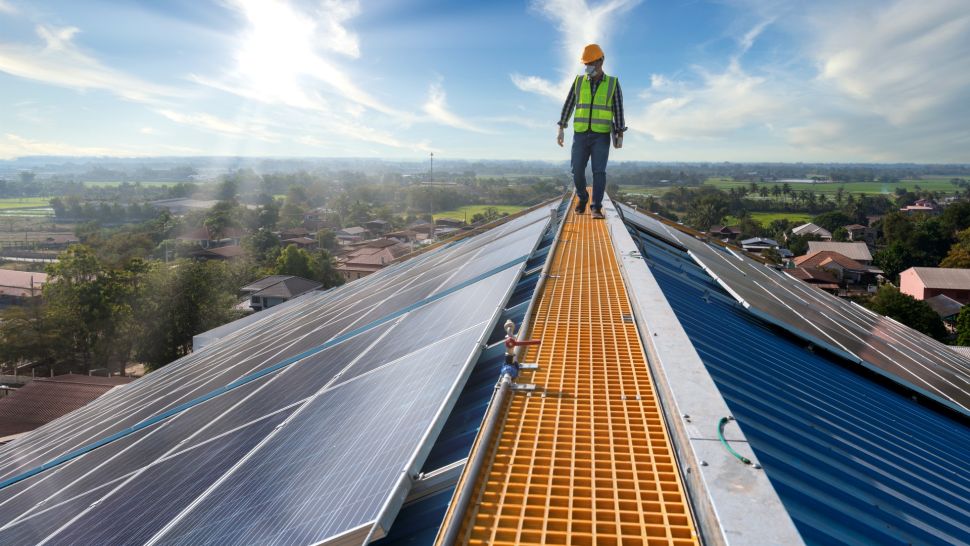
A photo of a technician on a roof checking solar panels. Renewable-energy storage involves storing energy from renewable sources such as solar. (Image credit: Pramote Polyamate via Getty Images)
Renewable-energy storage is important to help humanity reduce its dependence on fossil fuels such as oil and coal, which produce carbon dioxide and other greenhouse gases that cause climate change.
Harnessing the power of the sun with solar panels and utilizing wind power with wind turbines are two common ways to generate renewable energy. But the sun isn't always shining and the wind isn't always blowing when we want electricity, and sometimes they produce surplus energy when demand is low.
To reduce the impact of inconsistent energy generation from renewable sources, scientists and engineers are developing ways to store excess energy for use when it's needed. There are many different ways energy can be stored, and new storage techniques are being developed and refined all the time. Here are some of the best and most promising methods for storing renewable energy.
1. BATTERIES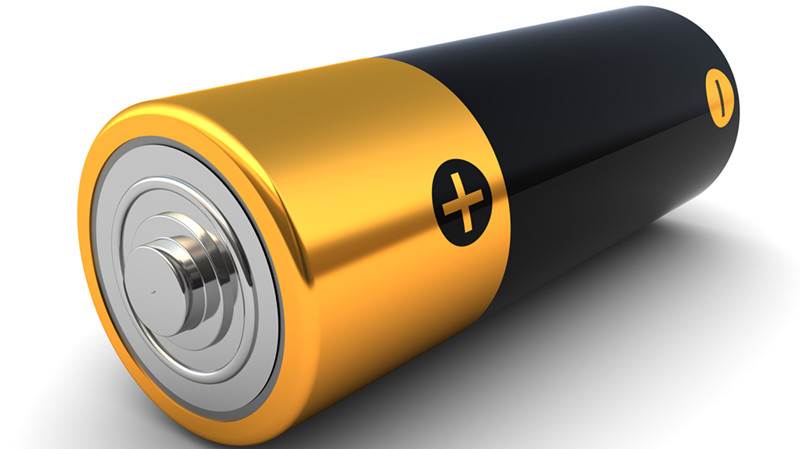
The negative end of a battery is connected to an electrode called the anode and the positive end is connected to another electrode called the cathode. Electrolyte, a liquid substance of electrically charged ions inside the battery, combines with the material of the electrodes to produce a chemical reaction that generates an electrical current. In lithium-ion batteries, the anode and cathode store lithium, according to the U.S. Department of Energy. The electrolyte carries positively charged lithium-ions from the anode to the cathode to power something and vice versa when the battery is charged, which can be done using renewable energy.
Lithium-ion batteries have some disadvantages. For example, they become less efficient and more likely to fail over time, according to the Clean Energy Institute at the University of Washington. They are also expensive to produce on a large scale, and extracting the raw materials needed to make them has a negative environmental impact. Like most other energy-storage methods, batteries don't retain all the energy that is put in them; they have an efficiency of 85% to 95%, according to a 2020 report by the World Energy Council, a network of energy leaders promoting sustainable energy.
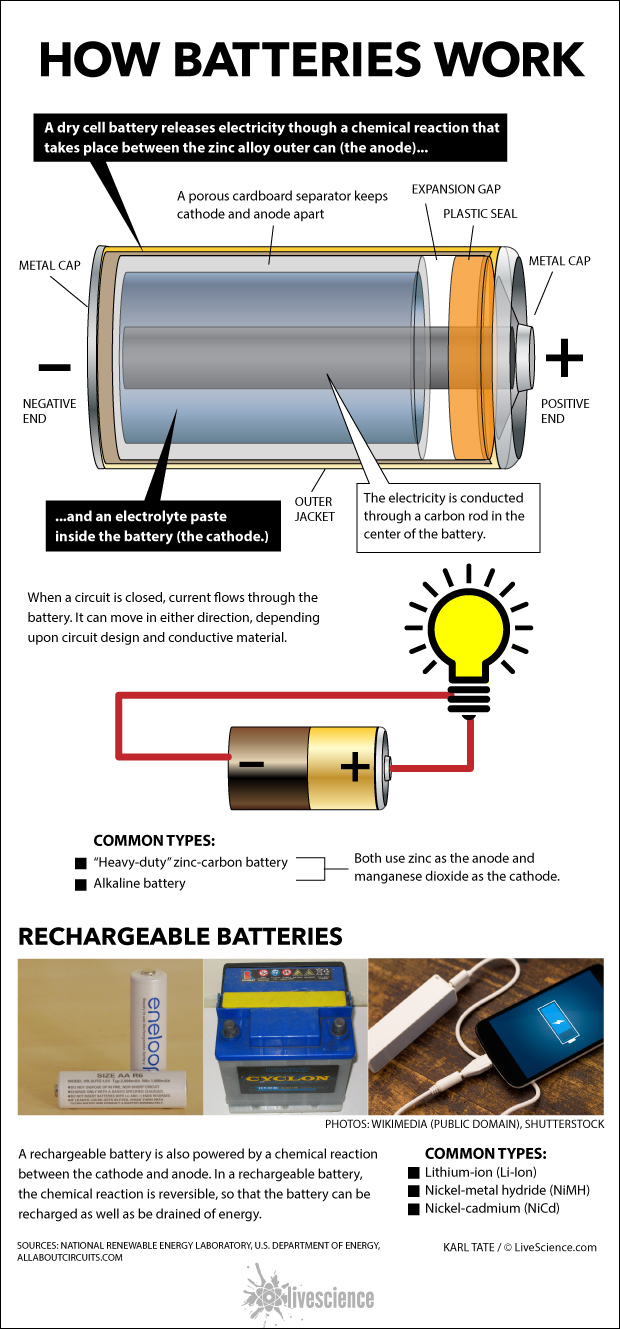
2. PUMPED HYDRO ENERGY STORAGE
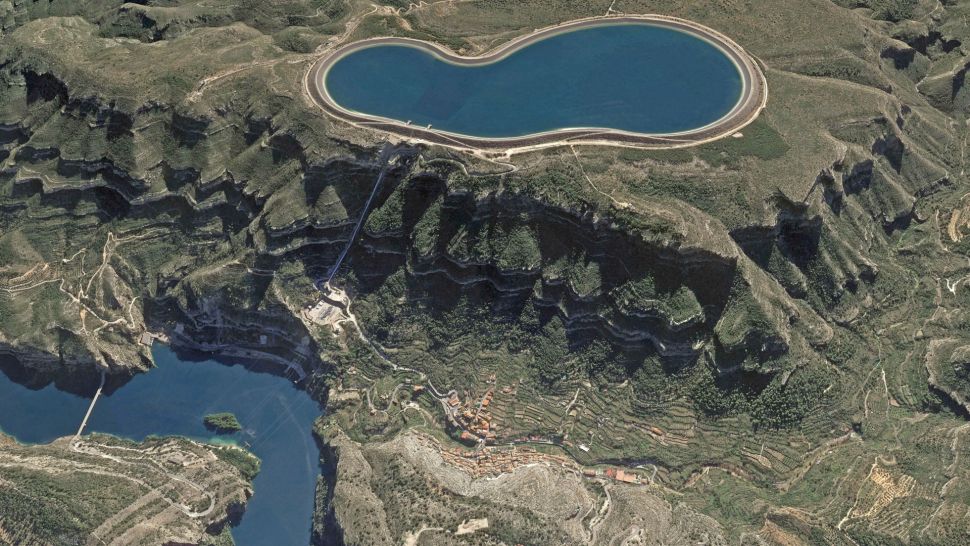
The largest pumped hydroelectric storage facility in the world is in Virginia and serves power to about 750,000 homes, according to the Environmental and Energy Study Institute. Pumped hydro energy storage systems are typically built into, or near, rivers alongside the production of hydroelectric energy. However, they can also be used using seawater from oceans. A pumped hydro energy storage system on Okinawa Island, Japan, pulls seawater out of the ocean and up a hill through a pipeline. The system then releases the water back down through the pipe to power turbines and generate electricity, according to the University of Strathclyde in Scotland.
3. PUMPED THERMAL ELECTRICITY STORAGE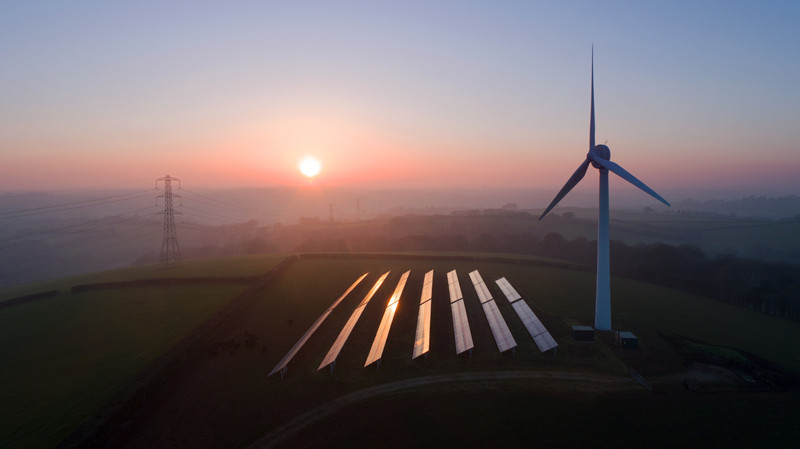
The method uses easily accessible materials such as gravel, so it can be set up almost anywhere. Pumped thermal electricity storage has an expected efficiency range of between 50% and 70%, according to a 2017 paper published in the journal Renewable and Sustainable Energy Reviews. This technology is still being developed. The first demonstration Pumped thermal electricity storage facility at Newcastle University in England demonstrated an efficiency of 65% in 2019, according to a 2020 study published in the journal Frontiers in Energy Research.
4. GRAVITY ENERGY STORAGE
A U.K. company called Gravitricity is developing a technology to take full advantage of gravity. The method uses electricity to lift weights on a winch, which are later released to turn an electricity generator, regaining most of the energy used to lift them. This equipment could be built in disused mine shafts to drop around 13,200 tons (12,000 metric tons) down a shaft more than 2,620 feet (800 meters) deep, The Guardian reported in 2019. The technology has a predicted efficiency of 80% to 90%, according to the Gravitricity website. Another gravity-based system uses excess power to pull trains up an incline before letting them roll back down to release the stored energy, Live Science previously reported. A company called Advanced Rail Energy Storage (ARES) is developing one of these systems in Nevada, according to the ARES website.a
5. COMPRESSED AIR ENERGY STORAGE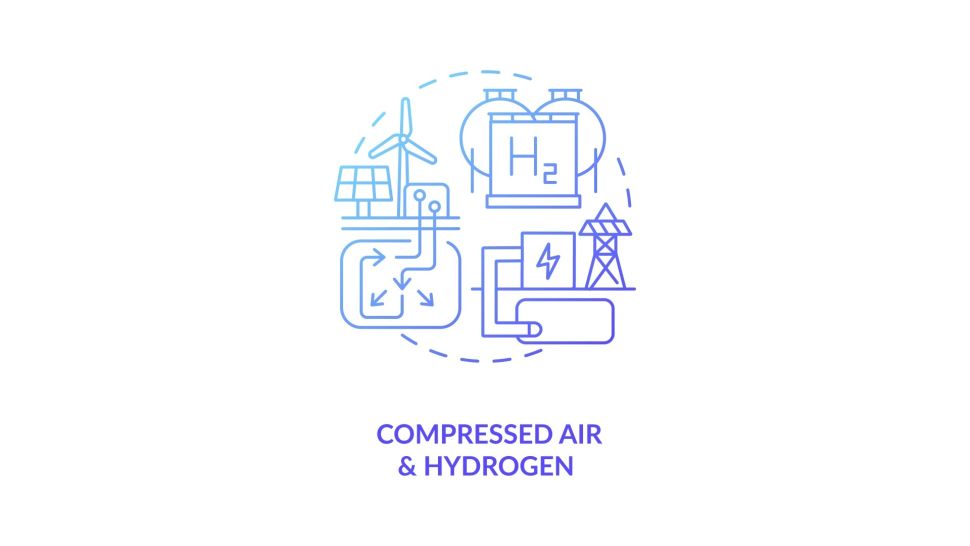
Hydrogen is used as a form of chemical energy storage. Electricity is converted into hydrogen through a process called electrolysis, which breaks up water into its hydrogen and oxygen elements, according to the U.S. Department of Energy. The hydrogen can then be stored and used as fuel to generate electricity. Hydrogen can also be used to power hydrogen vehicles to reduce greenhouse gas emissions from transport.
Using hydrogen to store energy has an efficiency of 35% to 55%, according to the 2020 World Energy Council report. Hydrogen fuel cells are costly, as they require expensive metals such as platinum. However, they are used to power and backup critical facilities such as telecom relays and credit card processing, according to the Environmental and Energy Study Institute.